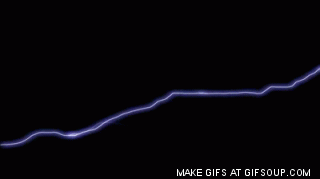Electricity was discovered by many experts at different ages, and is not invented. Until in our modern time, electricity, indeed, is really on a state of people's demand. In other words,the higher of technology, the more electricity is needed. To acquire electricity, we need an electric power.
Power in AC Circuits has any different expressions to be analyzed clearly and understand its concepts. It has an instantaneous power. Across the element, it is the product of an instantaneous voltage and an instantaneous current flowing through it.
The energy flow in the system are expressed in the following:
Remember that S is the complex power. Otherwise, the S length is the apparent power. Reactive Power has the reason values established(inductor and capacitor). We know that in an induction, it creates magnetic field by a coil of wire. On the other hand, in capacitor, has a magnetic field on which these two only comes from reactive power. Active Power is equal to the product of current and voltage in a root mean square(rms) on which it is a cosine of each angles.
Then,
P = Vrms Irms cos(Vangle - Iangle)
---------------------------------------------------------------------------------
THE POWER FACTOR DEFINED & CORRECTION
What is p.f.? It is a power factor. Power factor is the ratio between the active power(P) and apparent power(S). Therefore, p.f. = P/S or p.f. = cos(Vangle - Iangle). As what I've observed lately, getting a p.f. value should be near or exactly or ahead to 0.8.
Take note that, getting a load value must be identified if:
- it is positive, it is an inductive. And it is lagging.
- it is negative, it is capacitive. And it is leading.
- it is purely resistive, it means that the voltage and current are both "in phase."
Example 1.0:Find the power factor when:
- The wattmeter is reading 1.5 kW. And
- Ammeter reading 7.53 A rms. at 240 V rms
At first, we're going to calculate the apparent power by multiplying both V rms and I rms.
S = EI
S = (240)(7.53)
S = 1807.2 kVA
Since we've got the exact value of an apparent power, it is now time to find the power factor.
Solution: Using the ratio of True Power and a Complex Power.
Thus,
p.f. = P/S
p.f. = 1.5kW / 1807.2kVA
p.f. = 0.8
---------------------------------------------------------------------------------
THE POWER TRIANGLE
In this diagram, it shows the functions of this right triangle figure. Side by side, it has different power expressions. Reactive power is placed in an opposite. The Active power or "True Power", is placed in an adjacent and the Complex power is placed in a hypotenuse.If we turn back on Trigonometry, the principle "sohcahtoa" is most useful in such calculations.






